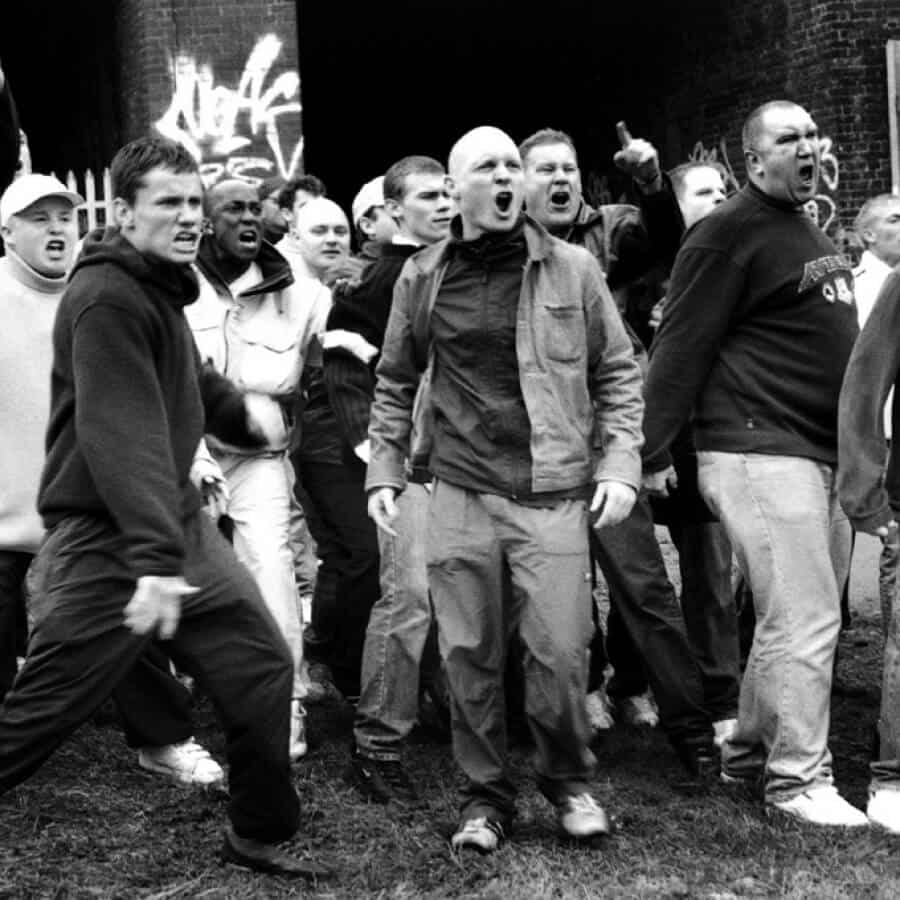Starting in the 1970s, young men filled with a lot of negative energy and hate began looking for ways to release it. They gathered in pubs or city centers. They shared the same taste in music and clothing, and a passion for their beloved football clubs. Now these men are fathers and grandfathers. Their lives are no longer filled with the passions of 1970s. But their youth was driven by those passions, and those memories from the past have followed them through their entire lives.
The casual subculture is typified by hooliganism and expensive designer clothing. They once wore brands such as Lacoste or Stone Island so they could avoid the attention of police. They are often compared to Mods when it comes to their clothing. Youth from Liverpool started dressing differently from other fans, and they were the first to wear continental European brands. They bought them when their teams had matches in Europe. There was also a subculture known as Perry Boys, from Manchester. They were like a precursor to the casuals, and they also wore sportswear, Fred Perry shirts, and trainers. Later, they started wearing brands such as Tacchini, Diadora, and Armani. This was a smart move, because the police were still looking for skinhead fans in their Dr. Martens boots, and they did not pay attention to fans in expensive designer clothing.
Economics Professor Peter T. Leeson recalls, “Originally, a hooligan was a person who engaged in any kind of rowdy, possibly criminal, behavior. In the mid-1960s the contemporary concept of a distinctive ‘football hooligan’ was born: a person bent on rowdy, possibly criminal, football-related behavior, most importantly, fighting. Football hooliganism is found throughout the world. But historically it has been most prominent in the country where it emerged: the United Kingdom. Hooliganism’s heyday was between the mid-1960s and the mid-1980s. Because of its British prominence, during those decades it came to be called the ‘English Disease’.”
Hooligan groups are organized in so-called ”Firms”. Every club in England has such a group of supporters; and their main goal, besides supporting the beloved team, is to make the largest problems for the local authorities. Only after a few tragedies happened was the importance of this issue noted and then responded to.
The Heysel tragedy occurred in 1985, at Heysel Stadium in Brussels, before the finals of European Cup match between Juventus and Liverpool. That is when, due to hooliganism, one side of the stadium wall was destroyed and 39 people died, mostly Juventus fans. All English clubs were expelled from the competition that year. The Hillsborough tragedy happened in 1989 while the FA Cup semi-final match between Liverpool and Nottingham was underway. That’s when 96 spectators were killed because they were crushed by the fence. It was the biggest tragedy in the history of English football. For a long time, it was believed that the culprits were hooligans, but after 23 years it was discovered that the problem was that the police had mistakenly put too many spectators on one side of the stadium.
The Prime Minister of the United Kingdom from 1979 to 1990 was Margaret Thatcher, and she was the person who brought an end to the “English Disease”. Even though many will say that England should be grateful because she solved the problem of hooliganism, popular opinion is that she damaged English football as much as she helped it. Why? Because she was massively at “war” with the working class, she saw them as animals who needed to be in a cage. Thus she helped the development of the upper class and fettered ordinary people. People expressed dissatisfaction with their daily lives in the stadiums, and that happened because they were losing their jobs, they were in a difficult position.
Furthermore, that was the main reason why the great hostility between ordinary people and the police started in the first place. That’s when Thatcher passed a statute and a rule which allowed people to enter stadiums only with a football ID card. But this did not last long after many tragedies happened in the English football. She had no problem with ”sacrificing” the development of one city for another. In the city of Liverpool she will never be recognized as someone who saved football in any way.
The lost youth of one generation will always be remembered for more than merely deviant behavior. In the case of the Hooligans, violence was a revolt against the entire system, against the social and political circumstances that made people dissatisfied with their everyday lives.
Support us!
All your donations will be used to pay the magazine’s journalists and to support the ongoing costs of maintaining the site.
Share this post
Interested in co-operating with us?
We are open to co-operation from writers and businesses alike. You can reach us on our email at [email protected]/[email protected] and we will get back to you as quick as we can.









